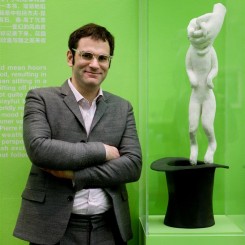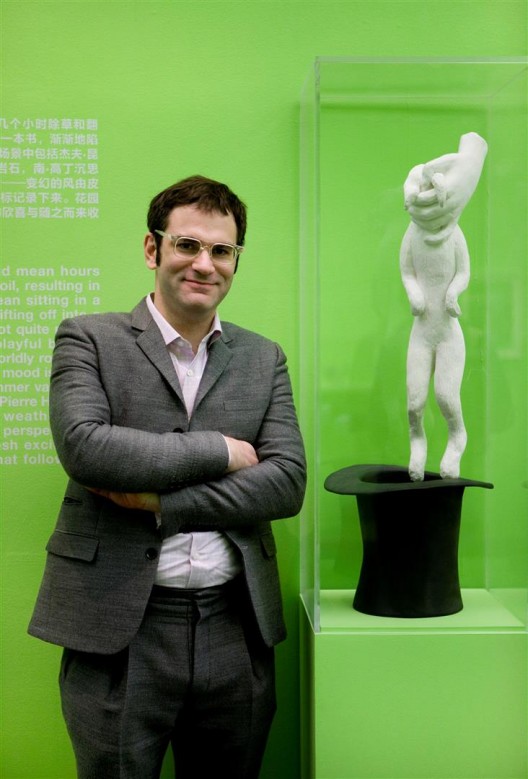The 2014 Armory Show will be held from March 6th–9th on Piers 92 & 94 in Manhattan, New York. Over 200 galleries and art institutions from 29 different countries will be taking part. The Armory Show was named as an homage to the famous modern art exhibition of the same name held by the Association of American Painters and Sculptors in 1913; the original exhibition was held at the 69th Regiment Armory, which gave rise to its name. The 1913 Armory Show was of landmark significance to American art and modern art history; not only did it introduce the American public to styles of modern art flourishing in Europe, such as Cubism, Futurism, and Fauvism, it also awakened American artists still languishing in the traditions of Realism. As the winds of avant-garde European Modernists swept through America, they triggered the creation of a uniquely American artistic language, leading to New York’s eventual eclipse of Paris as the world’s art capital. In this sense, the 1913 Armory Show is often seen as the cradle of Modern art in America, but the current “Armory Show” cannot trace its lineage directly back to the 1913 exhibition, thus it would be more accurate to say the current art fair pays “tribute” to the original. Its previous incarnation was the Gramercy International Art Fair held at the Gramercy Hotel in 1994, founded by art dealers Colin de Land, Pat Hearn, Matthew Marks, and Paul Morris. In 1999, the Fair migrated to the 69th Regiment Armory, the original location of the 1913 Armory Show, and its name was changed accordingly.
This year’s Fair will feature the fifth edition of Armory Focus at Pier 94. As the curated section of the Armory Show, Armory Focus highlights art from a specific geographical region. The 2013 Focus was curated by Eric Shiner, and featured art from the United States, and the 2013 edition was curated by Jacob Fabricius, and revolved around Northern European countries. This year, the spotlight of the Armory Focus will fall on China, with the director of the Ullens Center for Contemporary Art in Beijing (UCCA, Beijing), Philip Tinari, curating the exhibition program. An American, Tinari has been in his role as the director of UCCA, Beijing since 2011, and has long been established in China as a contemporary art critic and curator. He was also the former Editor in Chief of bilingual arts magazine LEAP. Randian interviewed him just prior to The Armory Show’s launch.
randian: The section you organized “Armory Focus: China” will present 17 galleries and works by 20 artists, and a lot of them have had shows at UCCA where you’re the director. On which principles did you select these artists?
Phil Tinari: No, not at all. In this show about half of the galleries are delivering specifically solo presentations because it’s younger artists from what we might call the “On/Off” generation. And the other half are doing two, three or even four artist presentations that hint at different trends or different moments in this 35 year long story of contemporary China. So it was about striking a balance between those two. In terms of the actual galleries, they do decide that they want to be there and they do assume a huge fee as they do for any fair. It was really a very mutually selecting process. I made the rounds to the usual suspects amongst our friends and long-time collaborators. There are some who felt, for whatever reason, that it wasn’t right for them to do this show, and there were a few that came over. But the nice thing about it was that it wasn’t really a selection process in the way that Art Basel is, where 900 applications are sorted by a committee that’s been to China twice. It was really more like a dialogue process of seeking out the galleries and either saying “I think this part of your program would be very interesting to take to New York,” or in some cases me thinking I would like to see these artists there and seeing if they are willing to play ball.
randian: What aspects of Chinese contemporary art do you think these artists illustrate or represent?
PT: Among these younger artists—He Xiangyu, Li Shurui, Zhao Yao, Lu Pingyuan and Liang Shuo—I think you see a sensibility that I’ve been very interested in lately, which is art that speaks to a Chinese situation and conditions but doesn’t actually look Chinese on the surface. That’s I think a defining method for this younger generation, the so-called “On/Off” generation. I have also included work that goes back to some moments from earlier in history, so for example 10 Chancery Lane Gallery is doing a booth that puts Wang Keping and He An [together] and Huang Rui also, who will present a group of paintings from the mid-80s—some abstractions based on the geometries of courtyard houses that have never been shown before. So that’s two key figures from the Stars. And Meg Maggio is doing a three-man presentation of Wang Luyang, Chen Shaoxiong and Zhao Liang, which is looking back to the new analysts and post-sense-sensibility. Or what Osage is doing, which is a Northern Salon of painters from Dongbei [Northeast China] and Northern China for example, who are taking that idea of a sort of updated socialist realism in different directions—and that display will also rotate. So, I hope that different threads will be visible from socialist realism and its academic systems to various avant-garde movements that have happened after different points in the 80s, 90s and 2000s, to the advent of very real-time, present work.
randian: As this is your first director job, in what ways is your experience at UCCA shaping your understanding of Chinese art, and what are the challenges so far?
PT: Coming from this institutional place now, I see it very differently from when I was editing a magazine. Simply because magazines are looking for things to laugh at and make fun of or cast a critical light on, and then when you are on the other side you are trying to build things that can at least stand up for a little while. So yes, as we’ve done different shows and had to work indirectly with these different galleries. You just get a better and deeper understanding of where the overall ecology is…Many of these artists for the Armory have [had] shows at UCCA at one point or another in some way or form, and so this sort of becomes a report on the work we’ve been doing at UCCA—of course mediated through the galleries, but, you know, it’s the same artists. To bring it to New York in this necessarily quick manner is exciting.




